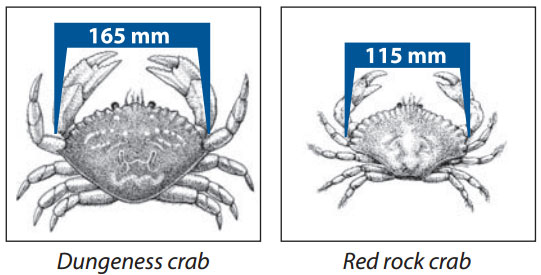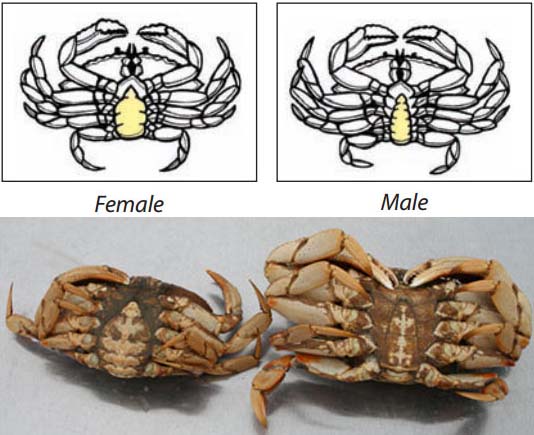Recreational shellfish harvesting rules and regulations in B.C.
You must follow all rules and regulations while harvesting shellfish and only harvest in areas that are open to harvesting. It is both illegal and unsafe to eat bivalve shellfish harvested from a closed area.
Before you harvest
Before you harvest
- Buy a tidal waters sport fishing licence to harvest shellfish in salt water, including tidal water boundary areas in rivers
- Check what gear you're allowed to use
- Check the area you intend to harvest for limits, openings, closures and restrictions:
- Recreational fishing limits, openings and closures: review all fishery closures, including closures due to contamination. If an area is open for harvesting, make sure you harvest within the specified limits
- Restricted fishing areas
For planned and seasonal closures, see:
During and after your harvest
During and after your harvest
It is dangerous and illegal to harvest shellfish in prohibited areas. Prohibited areas are:
- clam and oyster aquaculture sites
- 125 metres (440 feet) or less from a wharf, aquaculture operation or floating accommodation
- 300 metres (1,000 feet) or less from sources of pollution, sewage or wastewater treatment plants
Check your gear carefully:
- Remove and release all bycatch. You must release incidental catch alive to the place where you caught it in a way that causes the least harm to the animal
- Identify your catch and make sure that you don’t keep more than your daily limit for any species
Check our packaging and transport rules to make sure you handle your catch safely and legally.
Crab rules
Crab rules
You must immediately measure your crab across the widest part of the shell using calipers and release all undersized crabs.
The minimum harvest size is:
- 165 mm for Dungeness crabs
- 115 mm for red rock crabs

It is illegal to possess female Dungeness, King, Puget Sound King, Brown Box and Red Rock crabs. Females can be identified by the wide beehive shape on their abdomen (males have a narrower lighthouse shape). Female crabs must be released immediately. New

Always release crabs gently into the water as close to the surface as possible to prevent harming them. Throwing them into the water from the height of a wharf or dock is prohibited.
Soft-shell crabs
We encourage you to voluntarily release soft-shell crabs. These yield less meat that is lower-quality compared to hard-shell crabs. Releasing them allows them to develop higher-quality meat that can be harvested later.
European Green crab
If you find an invasive European Green crab on the east coast of Vancouver Island or the mainland of B.C., please leave it where it is but report it to us by sending a photo with details of its location to DFO.AISPacific-EAEPacifique.MPO@dfo-mpo.gc.ca.
Crab watch program
Some provincial parks run a crab watch program to protect undersized crabs. If you see a violation, please protect crab breeding stocks by reporting it to:
- Vancouver: 604-607-4186; or
- Toll-free Observe, Record and Report line: 1-800-465-4336
Prawn and shrimp rules
Prawn and shrimp rules
It is illegal to:
- retain more than 125 prawns per day
- retain prawns carrying eggs under their tail. Handle your catch with care and release all egg-bearing females back to the water where you caught them
- harvest prawns in glass sponge reefs and some marine protected areas
It is also illegal to retain rockfish caught in prawn traps. Use a descending device to release a rockfish gently back to the area where it was caught.
We encourage you to:
- release smaller prawns
- take only what you need to conserve prawn and shrimp populations. The daily catch limit should not necessarily be your target
- haul your gear slowly to allow smaller prawns and bycatch to escape the trap while in the water
Other species-specific rules
Other species-specific rules
The following are managed as shellfish in B.C.:
- bivalves such as clams, oysters, mussels, scallops and cockles
- snails including whelks, tritons and periwinkles
- moon snails
- crustaceans such as crabs, shrimp and prawns
- other invertebrates such as octopus, squid, sea cucumbers and sea urchins
Abalone
Northern abalone are an endangered species and it's illegal to harvest them. All incidentally caught abalone must be released alive to the place where you caught them in a way that causes the least harm to the shellfish.
Clams
Clams are bivalve shellfish. Eating bivalve shellfish harvested from a closed area is unsafe. Check the area that you are planning to harvest in to make sure that it is open every time you go out.
The total combined daily limit of all species of clams harvested is:
- 24 in the Pacific Rim National Park
- 60 in all other parts of Areas 11 to 27
- 0 in Areas 1 to 10
The minimum harvest size is:
- 35 mm for manila or littleneck clams
- 55 mm for butter clams
We encourage you to fill in holes to protect exposed juvenile clams.
If possible, don’t dig clams unless you intend to keep them. If you rebury cockles or butter, littleneck or manila clams, we recommend you bury them:
- clams25 cm deep for butter clams or 5 cm deep for other species
- in the same hole where they were found
- with the short side facing down and the long side facing up
Olympia oysters
Olympia oysters are endangered, and it is illegal to harvest them. To avoid inadvertently harvesting Olympia oysters while you are harvesting Pacific oysters, do not harvest any oyster less than 5 cm in diameter. All incidentally caught Olympia oysters must be released alive to the place where you caught them in a way that causes the least harm to the oyster.
Welks, snails and moon snails
Welks, snails and moon snails can accumulate toxins and pollutants from contaminated bivalves. We recommend you do not harvest them from areas closed to bivalve harvesting. Make sure that you check for both contamination closures and regulatory openings, closures and limits before you harvest.
Related links
- Every season every trap counts: information on catch success by season, setting safe traps, daily catch limits and more
- Prawns spawn: how to size prawns, identify egg-bearing females and more
- Sharing responsibility for Pacific bivalves : Intertidal clams
- Protecting British Columbia’s Northern abalone
- Date modified: